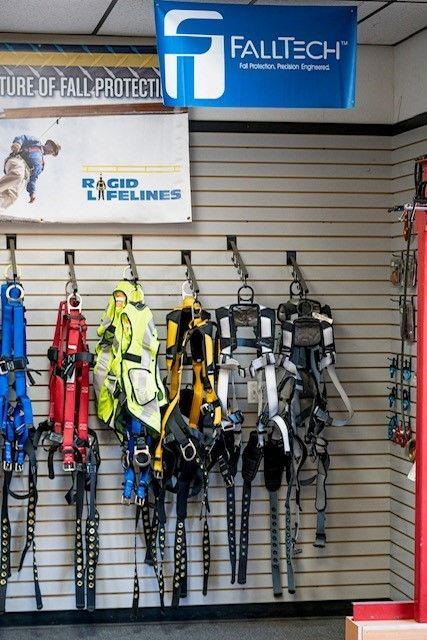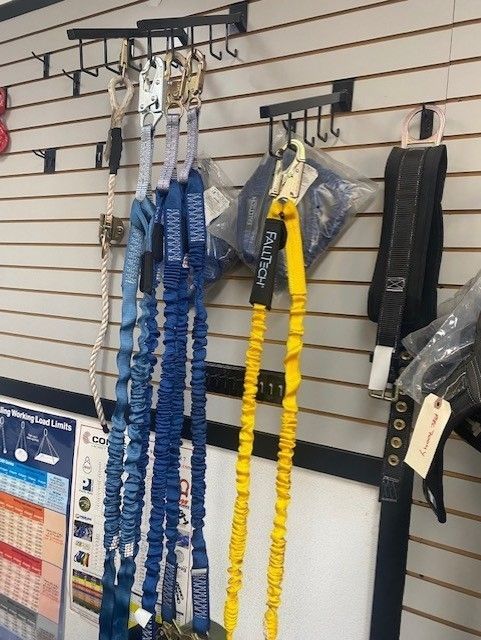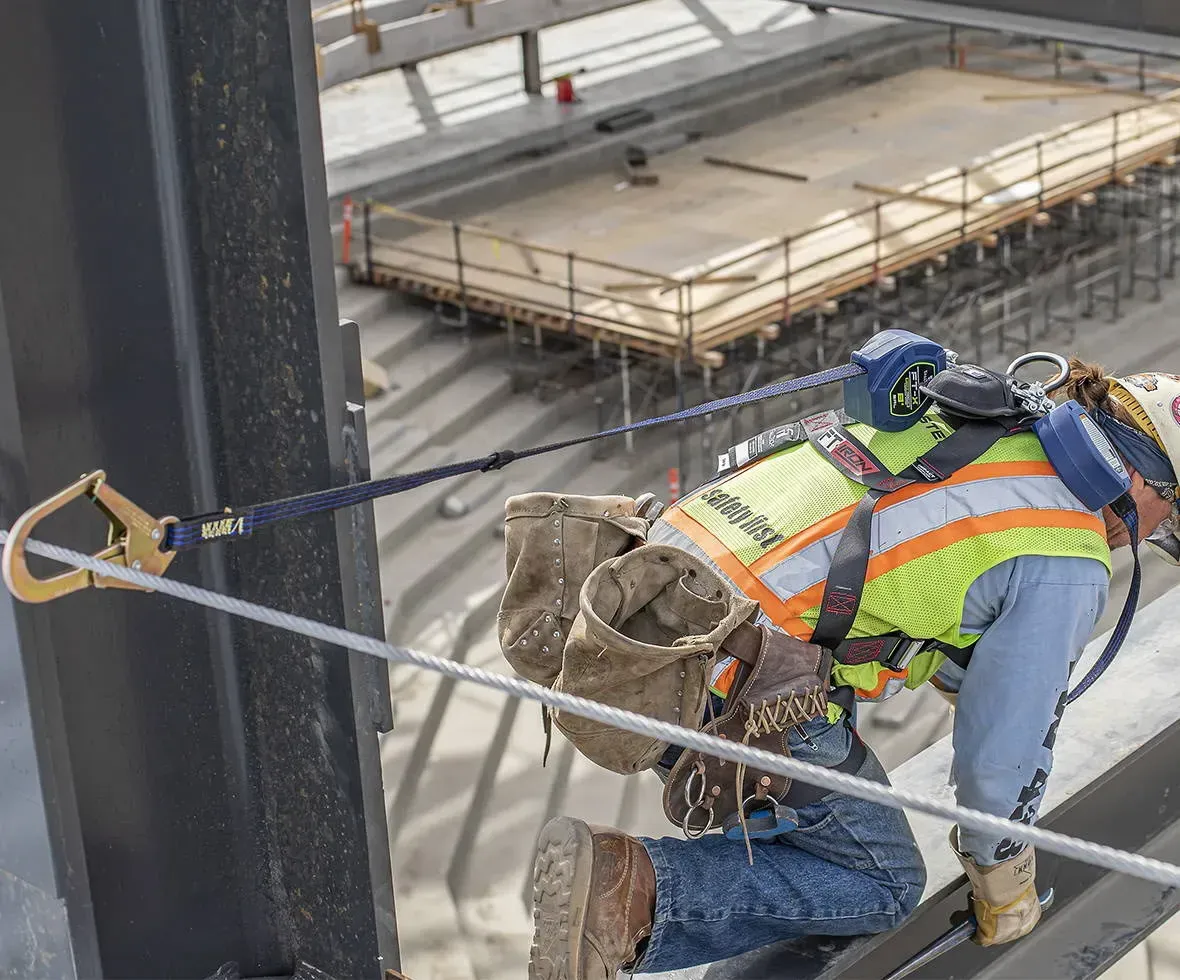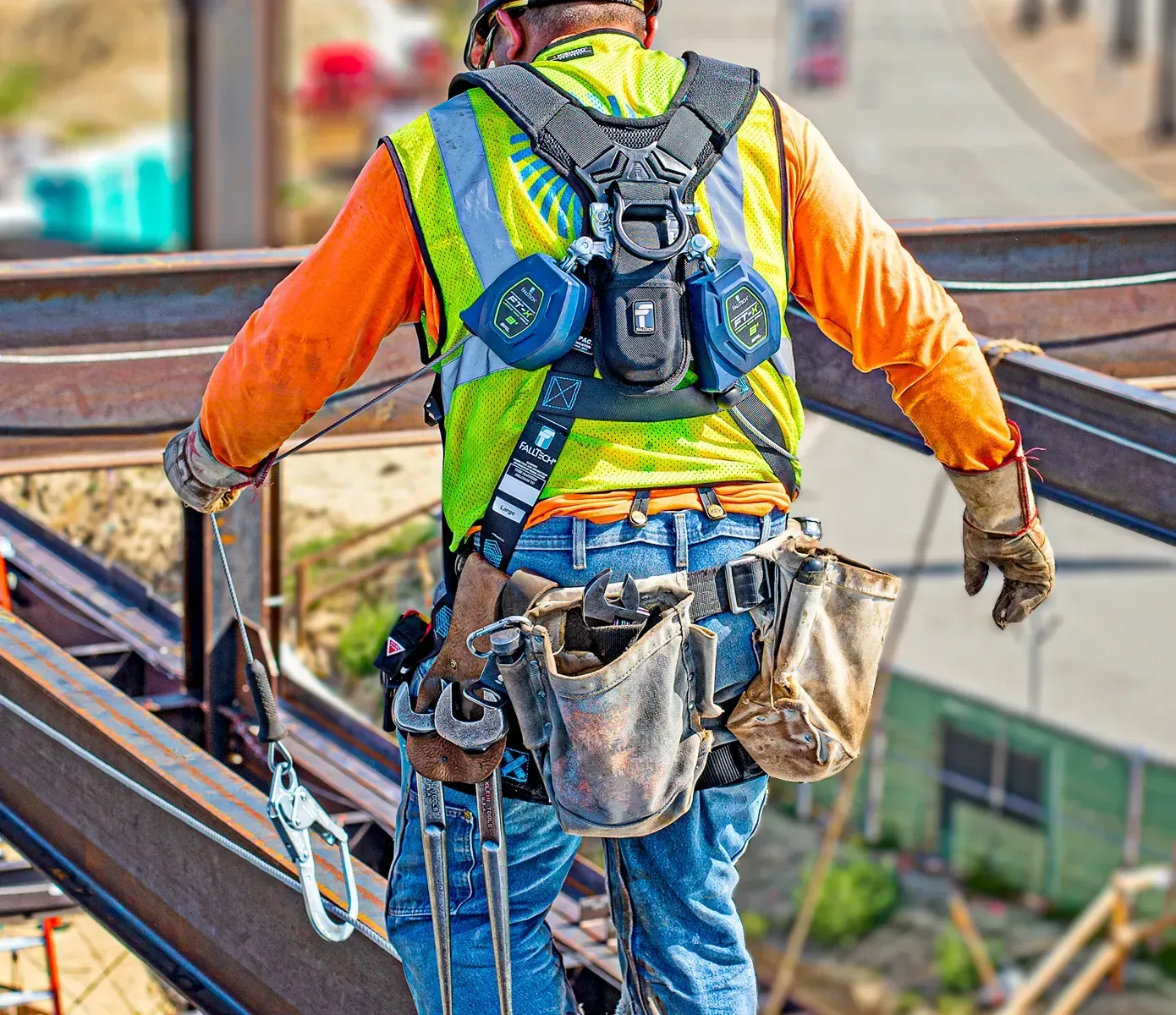fall protection
When working at heights, fall protection gear can be a lifesaver. Whether you're on a construction site, maintaining telecommunications towers or conducting repairs on wind turbines, proper fall protection is crucial. This page will provide you with a comprehensive guide to the different types of fall protection gear available, industry-specific requirements, and best practices for selecting, maintaining, and inspecting your gear.
There are various types of fall protection gear, including harnesses, lanyards, lifelines, and anchor points. Harnesses are the most commonly used gear, and they work in conjunction with other equipment to keep you safe. Lanyards are attached to the harness and the anchor point to limit the distance of a fall, while lifelines are used to keep you connected to a safe point while working. Anchor points are used to secure the harness and other equipment to a fixed structure.
Different industries have specific requirements for fall protection gear. For example, construction sites must follow OSHA guidelines, while the oil and gas industry has specific requirements for offshore work. It's essential to understand the regulations that apply to your industry and follow them to ensure maximum safety.
Choosing the right gear for the job is crucial. When selecting fall protection gear, consider the weight capacity, comfort, ease of use, and compatibility with other equipment. Don't forget to consider the potential fall distance when selecting gear.
Proper maintenance and regular inspections of fall protection gear are necessary to ensure that the gear remains in good working condition. It's important to perform routine inspections before each use and to have the equipment inspected by a qualified professional at least once a year.
Proper training and certification are crucial when it comes to fall protection gear. Workers must understand how to use the equipment correctly and safely. Training should cover topics such as equipment selection, fitting, inspection, and safe use. Certification can be obtained through various organizations that offer fall protection training.
Fall protection gear is essential for keeping workers safe while working at heights. By understanding the different types of gear available, industry-specific requirements, and best practices for selecting, maintaining, and inspecting gear, workers can stay safe and avoid accidents. Always remember to choose the right gear for the job, follow industry-specific requirements, and seek proper training and certification to ensure maximum safety.
Fall Protection Supplies
- Harnesses: Fall protection harnesses are worn by workers who are at risk of falling from an elevated position. They consist of straps that are secured around the worker's body, distributing the force of a fall across the torso and thighs. Harnesses come in various styles and sizes, and should be chosen based on the type of work being performed.
- Lanyards: Lanyards are a type of fall protection device that connects a worker's harness to an anchor point or lifeline. They come in various lengths and configurations, such as shock-absorbing lanyards that reduce the force of a fall.
- Mechanicals: Mechanical fall protection devices are those that use mechanical components, such as pulleys or brakes, to arrest a fall. Examples of mechanical fall protection devices include self-retracting lifelines and vertical lifelines.
- Anchors: Anchors are devices that are used to secure a worker's fall protection system to a stable structure or anchorage point. They can be permanent or temporary, and should be chosen based on the specific needs of the job.
- Combo/Kits: Fall protection combo/kits are sets of fall protection equipment that are designed to work together to provide a complete safety solution. They can include items such as a harness, lanyard, lifeline, and anchor point.
- Lifelines & Grabs: Lifelines and grabs are devices used to prevent workers from falling or to arrest a fall. Lifelines are ropes or cables that are secured to an anchor point and run horizontally along a worksite. Grabs are devices that attach to the lifeline and are designed to stop a fall.
- Roofers Kits: Roofers kits are fall protection systems designed specifically for workers who perform work on rooftops. They typically include a harness, lanyard, and anchor point, and are designed to provide maximum protection while working at height on a sloping surface.




